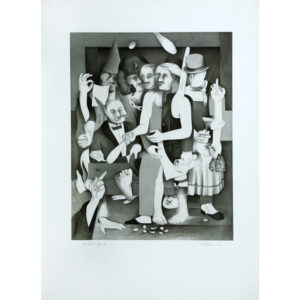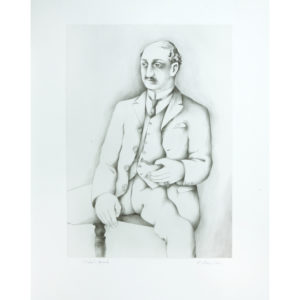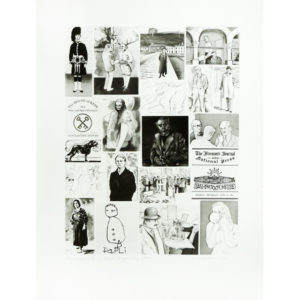Hamilton, Richard
Richard Hamilton, born in London on February 24, 1922 and died on September 13, 2011, was a British artist widely regarded as one of the pioneers of the Pop Art movement. His work, characterized by a blend of irony, popular culture and questioning of consumer society, has exerted a major influence on contemporary art.
Read more
3 results displayedSortedfrom newest to oldest
-

The Transmogrifications of Doom
Richard Hamilton
4 000€
-

Leopold Bloom
Richard Hamilton
2 000€
-

How a Great Daily Organ Is Turned Out
Richard Hamilton
4 500€
Biography of Richard Hamilton (1922-2011)
After studying at the Slade School of Fine Art, Hamilton became interested in the relationship between art, technology and popular culture. He made a name for himself in the 1950s with collages that played on the juxtaposition of symbols of consumer society. One of his most famous works, "Just what is it that makes today's homes so different, so appealing?" (1956), is often cited as the first true work of Pop Art. This collage, depicting a domestic scene saturated with consumer objects and advertising icons, subtly criticizes the omnipresence of consumerism and kitsch in modern society.
Hamilton was a member of theIndependent Group, a collective of British artists and intellectuals formed at the Institute of Contemporary Arts (ICA) in London, who questioned mass culture and new media. This group was one of the formative influences on Pop Art. In the 1960s, Hamilton continued to explore these themes, drawing on star iconography, emerging technologies and the visual culture of his time.
A versatile artist, he was also involved in social and political criticism through works such as his portrait of Hugh Gaitskell (1964), depicting the Labour Party leader as an enigmatic, authoritarian man. He also created a series of political works revolving around the figure of Margaret Thatcher and British society in the 1980s.
Richard Hamilton also maintained relationships with musicians, notably The Beatles, for whom he designed the cover of The White Album in 1968. His work on this minimalist cover, white and uncluttered, is the opposite of the flamboyant, saturated aesthetic of traditional Pop Art.
His influence extends beyond Pop Art; he is seen as an innovator and theorist of modern art, having anticipated many of the major trends of the late 20th century. His works are on show in numerous collections around the world, including London's Tate Modern and New York's MoMA.
Richard Hamilton marked his era not only with his visual art, but also with his critical reflection on society, the media and consumer culture. He remains one of the most influential figures in British and international art of the 20th century.
